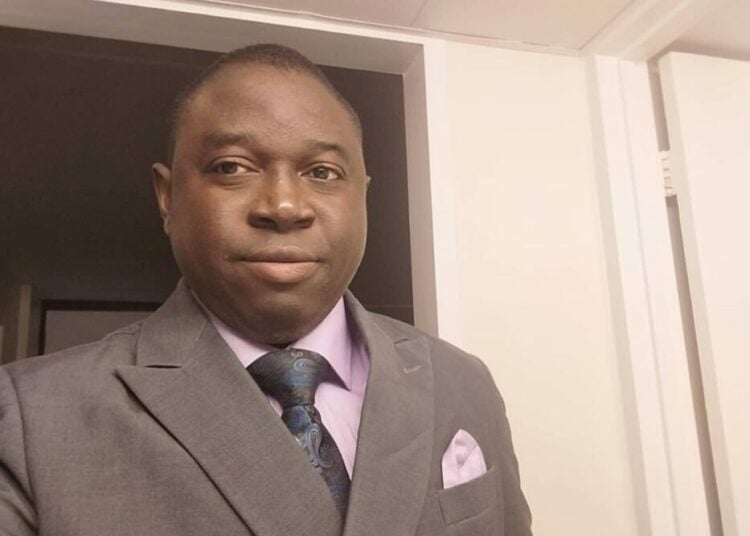In Nigeria today, a silent but devastating public health crisis is unfolding among its young population. The widespread use of substances such as tramadol, marijuana, and shisha has become increasingly visible across secondary schools and urban communities, but what remains dangerously underestimated are the long-term complications these substances impose on the lives of young people. A groundbreaking study led by Dr. Tolulope Olagoke Kolawole and published in the South African Journal of Psychiatry in 2025 provides urgent evidence that Nigerian youths are acutely aware of the immediate effects of drugs but remain largely ignorant of the irreversible consequences that develop over time. This lack of awareness, according to Dr. Kolawole, threatens not only individual health but also the social and economic stability of the nation itself.
The study, which surveyed 800 secondary school students across Lagos State, revealed a deeply troubling knowledge gap. While nearly four out of five students (79.1 percent) could identify at least one short-term complication of substance use, just 61.1 percent were able to mention even one long-term complication. The statistics mean that close to four in ten adolescents in Lagos, Nigeria’s commercial nerve center, are unaware of the devastating impact that sustained substance use can have over the years or decades of a person’s life. For a country where a large proportion of the population is under 25, this is more than a health issue, it is a national development challenge.
The research team documented a disturbing imbalance between the recognition of short-term and long-term risks. Short-term complications that students readily identified included dependence, anxiety and depression, sleep disorders, and aggressiveness. Long-term complications, however, were poorly understood. Only 35 percent of respondents connected prolonged drug use with eventual dependence, while fewer still associated it with chronic anxiety and depression, personality disorders, or persistent aggressiveness. Far more severe outcomes, such as brain damage, kidney failure, or progressive cognitive decline, were almost invisible in the students’ responses, with only a handful of participants identifying them. More alarming still was the admission by nearly 39 percent of respondents that they did not know a single long-term complication of substance use.
The dangers of ignoring the long-term effects of substance use are profound. Experts emphasize that while young people may experience an immediate “high” or temporary relief from stress, the cumulative damage that substances inflict on the body and mind often dwarfs those fleeting sensations. Scientific evidence shows that psychoactive substances are particularly harmful during adolescence because the brain, and specifically the prefrontal cortex, is still developing. This is the region of the brain responsible for judgment, decision-making, and impulse control, meaning that drug use during this vulnerable stage can permanently impair brain development. Chronic use can lead to irreversible structural changes, long-lasting cognitive decline, and heightened risk of severe psychiatric disorders that often follow users into adulthood. “We are not just talking about a hangover or a few days of feeling low,” Kolawole noted. “We are talking about permanent scars on the brain and body that will shape a young person’s future health, education, and career. These are costs too high for any society to ignore.”
The physical consequences are equally debilitating. Long-term use of drugs like tramadol and marijuana can lead to irreversible damage to vital organs, including the liver, kidneys, and heart. Adolescents who use drugs are also more vulnerable to infectious diseases, either through weakened immune systems or risky behaviors associated with drug use. For families, the fallout often includes broken relationships, financial instability, and the strain of caring for members with chronic illnesses. From an economic perspective, widespread substance abuse translates to diminished employability, reduced national productivity, and an increased burden on Nigeria’s already strained healthcare system.
What makes the situation worse is the environment that sustains it. According to Kolawole’s advocacy, several factors converge to keep Nigerian youths unaware of the long-term dangers. Limited access to age-appropriate health information prevents many students from understanding the science behind drug use and its risks. In popular culture and peer groups, drugs are often glamorized, portrayed as fashionable, liberating, or harmless in moderation. Myths and misinformation perpetuate the idea that certain substances can be taken casually without risk. And perhaps most damaging of all, school-based prevention programs, where they exist, tend to be irregular, shallow, and lacking in depth. Students may sit through a lecture or an awareness talk once in a term, but the messages fail to leave a lasting impression.
In response to these findings, Dr. Kolawole has emerged as a passionate advocate for a new approach to prevention of substance use, one that emphasizes the long-term consequences of drug use with the same urgency given to short-term risks. He proposes a framework that combines educational reform, media campaigns, international collaboration, and grassroots mobilization to fundamentally change how Nigerian youths perceive drugs. Central to his advocacy is the integration of detailed, age-appropriate modules on long-term health risks of drug use into Nigerian school curricula. He argues that textbooks, classroom lessons, and visual aids should all communicate not just the immediate harms of drugs, but also the irreversible physical and mental damage that prolonged use inflicts. “Drug education must go beyond slogans,” Kolawole said firmly. “We need detailed, scientific content that shows young people what drug use does to their bodies over five, ten, or twenty years. Only then will the message sink in.”
Beyond the classroom, Kolawole envisions multi-channel public awareness campaigns that flood Nigeria’s communication landscape with accurate, accessible messages on drug dangers. These would involve government agencies, civil society groups, and media houses producing consistent campaigns across television, radio, social media, and community events. The goal would be to make the irreversible consequences of drugs an everyday conversation topic, challenging glamorized narratives and reinforcing evidence-based knowledge. He also stresses the importance of international collaboration, suggesting that organizations like the World Health Organization and the United Nations Office on Drugs and Crime could play a vital role in providing technical expertise, educational materials, and funding for nationwide awareness programs.
Another critical element of his advocacy is peer-to-peer engagement. Kolawole proposes training motivated students as drug-prevention ambassadors who can speak to their peers in relatable language, bridging the generational and cultural gaps that often limit the impact of adult-led campaigns. Parents, too, must be empowered with factual, easy-to-understand materials so they can engage their children in meaningful dialogue at home. Kolawole emphasizes that parental involvement can act as the first line of defense, reinforcing the lessons learned in schools and communities. “If parents have the right information, they can intervene early and break the myths before they take root,” he explained. “This is not just a task for teachers or doctors, it is a responsibility for the entire society”
Global best practices provide valuable models that Nigeria could adapt. Countries like Iceland and Australia have significantly reduced adolescent drug use through a combination of strict regulation, intensive public education, and youth engagement programs. Iceland, for instance, paired curfews and restrictions on unsupervised nighttime activities with investment in after-school programs and consistent public campaigns. Australia’s focus on both regulation and education has helped shape a culture that discourages drug use while offering support for those at risk. Kolawole argues that Nigeria does not need to reinvent the wheel but must adapt these strategies to its own realities, where enforcement must go hand-in-hand with community engagement and cultural sensitivity.
At the heart of Kolawole’s message is the belief that an informed generation is a protected generation. He warns that without targeted, sustained, and collaborative advocacy efforts, Nigeria will continue to raise young people who underestimate the risks of drug use until it is too late. For him, increasing awareness of the long-term complications of substance use is not simply a health initiative; it is a national development strategy. By equipping young Nigerians with accurate information, the country has an opportunity to safeguard its future workforce, reduce the burden of chronic illness, and strengthen its social and economic resilience. The study published in the South African Journal of Psychiatry serves as both a warning and a call to action, demanding that policymakers, educators, parents, and communities come together to close the knowledge gap.
The research findings underscores an uncomfortable reality: Nigerian youths know enough about drugs to experiment, but not enough to understand the irreversible damage that may follow them for a lifetime. Dr. Kolawole’s advocacy seeks to change that narrative, ensuring that awareness of long-term consequences becomes as widespread as the drugs themselves. The hope is that with persistent education, honest dialogue, and sustained advocacy, the nation can raise a generation that not only resists the temptation of drug use but also understands the full spectrum of dangers it carries, thereby protecting the future health and prosperity of Nigeria.
(Reference: Kolawole TO, Ogunyemi AO, Lucas AR. Prevalence of substance use and knowledge of its effects among secondary school students in Lagos, Nigeria. S Afr J Psychiat. 2025;31(0), a2370. https://doi.org/10.4102/sajpsychiatry. v31i0.2370)





